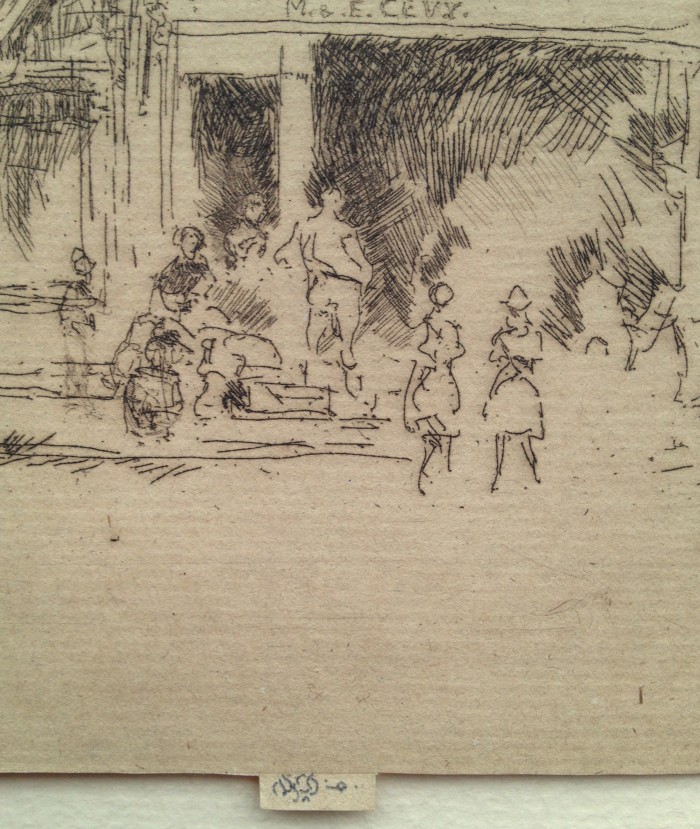St. James Place, Houndsditch
James Whistler (1834-1903), St. James Place, Houndsditch, 1887, etching and drypoint, signed with the butterfly on the tab and inscribed “imp”. [also with the butterfly in the plate, upper center] In very good condition, trimmed on the platemark except for the tab by the artist. References: Kennedy 290 (only state); Glasgow 255, second state (of 2). 82 x 178 mm, 3 3/16 x 6 7/8 inches.
Provenance:
R.M. Light and Co., Santa Barbara, California
Dr. H. Malcolm Hardy, Shawnee Mission, Kansas (not in Lugt)
A fine impression of this great rarity, with two tiny penciled circles verso (indicating that Whistler thought a this was a particularly distinctive impression).
Of greatest rarity. Margaret MacDonald’s Glasgow catalogue accounts for merely eight known impressions, all of them in museum collections (to which our impression has to be added). The print is first recorded as sold by the artist in November 1887. The same year, it was exhibited at the Royal Society of British Artists during Whistler’s brief presidency. As Glasgow notes, Whistler “must have thought highly of it, and sent it to an international exhibition in Brussels in the following year.” The print was nevertheless never properly published since a “Houndsditch Set” that was planned by the artist remained unfinished. This ultimately accounts for the print’s rarity.
During 1887–88, Whistler worked on a series of etchings of the East End of London. This is one of several prints in which he depicts some of the many small businesses then operating in Houndsditch, one of the Jewish quarters. His image of a busy street scene with modest shops, including that of M. and E. Levy (a fruit shop run by the brothers Moss and Eleazor Levy), was made at a significant moment in London’s Jewish history. From 1881–84 a new influx of Eastern European Jews had arrived in the city in the wake of a wave of pogroms after the assassination of Tsar Alexander II (for which they had been scapegoated). The new immigrants, typically desperately poor, settled in the East End in areas like Houndsditch, Whitechapel, and Spitalfields where there were already existing Jewish populations, and began to work in tailoring, cabinetmaking, shoemaking, and other crafts and trades. Around the corner from St. James’s Place was the grand synagogue in Duke’s Place, built in 1692, which had long been the principal place of worship for the city’s well-to-do Ashkenazi Jews by the time Whistler made this print. (It was destroyed in a German air raid in 1942).

